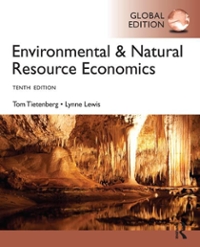Question
For all questions be sure to explain your answers and to use graphs whenever appropriate. 1. Suppose the government introduces a tax (physically collected from
For all questions be sure to explain your answers and to use graphs whenever appropriate. 1. Suppose the government introduces a tax (physically collected from workers) on high-skilled labor. a. How will the tax affect the labor supply curve of high-skilled workers? How will it affect their wage (WH), their after-tax wage (WH minus the tax), and their employment (LH)? b. How will the tax affect inequality in before-tax wages (that is, the difference between WH and WL)? How will it affect inequality in after-tax wages? (That is, how does the difference after the tax is imposed between WH minus the tax and WL compare with the difference between WH and WL before it was imposed?) 2. Consider two machines a firm might buy. Both will be productive for 3 years. One can be set up quickly. Its mrpK will be $5 million 1 year from now, 2 years from now, and 3 years from now. The other will take a long time to set up and make functional. Its mrpK will be $6 million 5 years from now, 6 years from now, and 7 years from now. a. If the interest rate is 1%, what is the present value of the stream of mrpK's for each machine? b. If the interest rate is 10%, what is the present value of the stream of mrpK's for each machine? What do you notice about the difference in the effects of the rise in the interest rate on the two present values? 3. How would each of the following developments affect the investment demand curve? (Recall: the investment demand curve shows the relationship between the interest rate and the quantity of new capital demanded for purchase.) a. A new tax raises the price of capital goods. b. New regulations have the effect that each machine produces less output than before. 4. (Note: You should wait to tackle this question until after lecture on Tuesday, March 7.) Suppose all workers in Argentina are identical, and that a typical worker there can produce either 1 automobile or 2 tons of corn in a day. a. Suppose the terms of trade in world markets are 1 automobile per ton of corn. What good will Argentina what to specialize in? What is its CPC (per worker, per day)? b. Suppose the terms of trade in world markets are 1/3 automobile per ton of corn. What good will Argentina what to specialize in? What is its CPC (per worker, per day)? 5. (Note: You should wait to tackle this question until after lecture on Tuesday, March 7.) Suppose there is international trade, and that because of developments abroad, the world price of blueberries (relative to other goods and services) rises. Show using a PPC/CPC diagram (with blueberries on the horizontal axis and everything else on the vertical axis) how, if at all, this development will affect the U.S. PPC, the U.S. CPC, and U.S. production of blueberries and other goods and services. (Assume the U.S. has a conventional bowed out PPC for blueberries and everything else.)
 Wages in $ $10 Supply $8 L -10W en es $6 $4 Demand LP_80-10W $2 20 40 60 80 100 Employment levels in hour
Wages in $ $10 Supply $8 L -10W en es $6 $4 Demand LP_80-10W $2 20 40 60 80 100 Employment levels in hour Step by Step Solution
There are 3 Steps involved in it
Step: 1

Get Instant Access to Expert-Tailored Solutions
See step-by-step solutions with expert insights and AI powered tools for academic success
Step: 2

Step: 3

Ace Your Homework with AI
Get the answers you need in no time with our AI-driven, step-by-step assistance
Get Started


